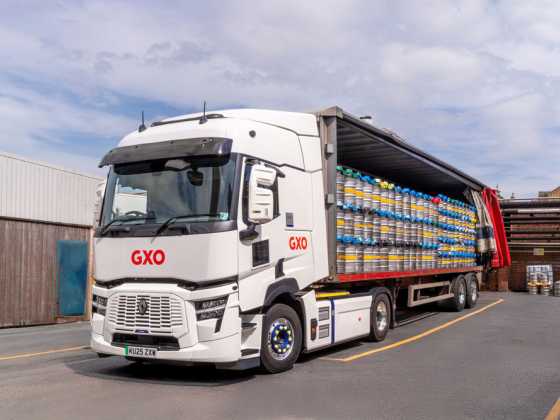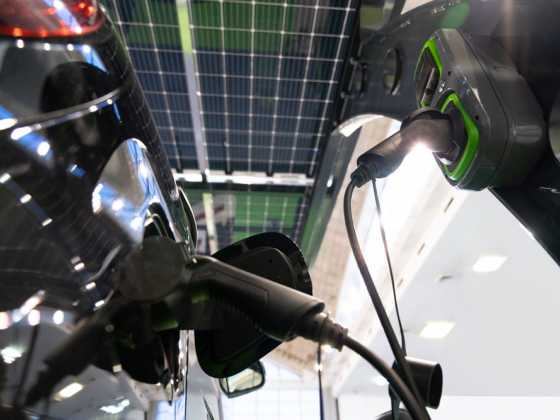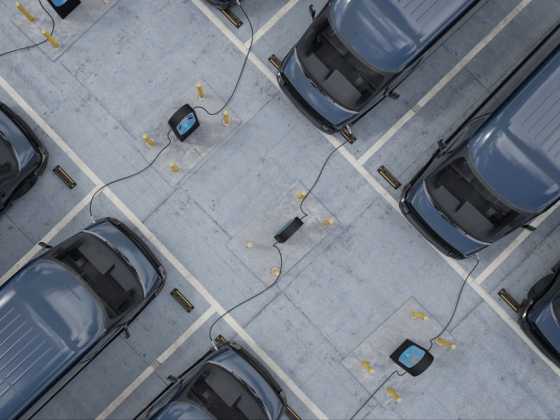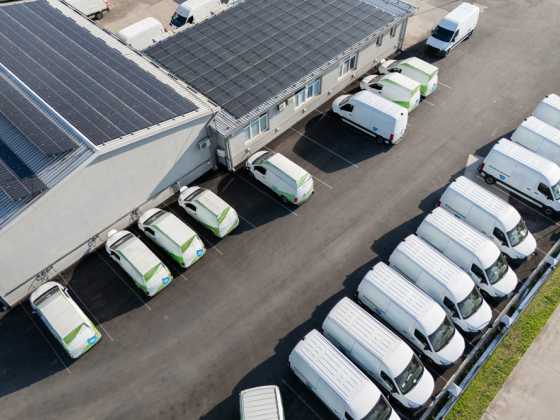Advice for installing workplace charging

Power availability, charging speeds, back office systems - there are several factors to take into account when planning a workplace electric vehicle charging installation. Here are some important points to consider.
When starting a fleet electrification journey, it’s crucial to determine where your future electric vehicles will be charged – whether at home, at the workplace, or through the public charging network. This requires evaluating the vehicles’ range and understanding how they will be used.
If it’s decided that you need to install charging infrastructure on site, there are a number of important points to consider. Firstly, you’ll need to understand your power availability. This involves finding out the size of your agreed supply capacity (ASC) from your DNO, how much of that power you use, and what spare capacity remains for EV chargers. This process is vital so you do not exceed your supply and risk a power outage.
If your site does have power limitations, there are ways to get grid connection upgrades via your district network operator, although this is an expensive, and often lengthy, move. But there are often instances where load balancing systems/software can work around this. This technology uses real time energy monitoring to change the maximum amount of energy that chargers can use based on availability and requirement of the site.
Having the ability to generate your own power, such as through solar, alongside an energy storage system, is another way around power constraints.
Nottingham City Council is a good example of this. The council installed 40 vehicle-to-grid bi-directional chargers with three solar arrays and two 300kW energy storage systems as a way of working around energy challenges. An energy management software solution communicates across all the technologies, giving the site the flexibility to make the best use of its own energy and provide services to the grid.
An important part of the an EV charging infrastructure project is getting a site survey. This will assess how EV charging can be installed and engineers will typically visit the site to assess power requirements and if any groundworks would need to be done. If you don’t own the property, you will need to obtain consent from the landlord for chargepoints to be installed. This can be time consuming and may involve legal work, so it’s worth beginning these conversations as early as you can. If the workplace charging will be open to the public outside of fleet usage, it must comply with the Public Charge Point Regulations 2023.
Understanding charging speeds
It is useful to have an understanding of charging speeds when embarking on a workplace charging project.
Fast charging has speeds of between 7kWh – 25kWh and is suited to instances where vehicles are parked up for the day or overnight. Rapid charging has speeds of 50kWh – 100kWh and can be used for quick turnaround charging.
Ultra-Rapid has speeds of 150kWh – 400kWh and is suited for public charging hubs, car parks, short-stay destinations and for electric HGVs. It’s also helpful to understand the difference between AC and DC charging. A chargepoint with alternating current (AC) will get the alternating current from the grid and pass this to the vehicle to convert to direct current. The vehicle dictates the maximum AC charging rate, typically 7kW, 11kW and 22kW (though there are few vehicles capable at the highest rate).
DC charge points have the converter within the charger which means that the power is converted to DC before it is passed to the EV. The size of the converters will be much bigger than those inside a vehicle and therefore this results in a faster charge time.
When choosing your chargepoint installer, it’s important to find out about their back office portals. A good back office system will allow you to monitor charging times, speeds, payments and conduct CO2 reporting. It’s also important to look at what aftercare the chargepoint operator offers for service and maintenance, including callouts for repair, and whether there are any extra charges for this.
What about public and home charging?
The number of public charge points in the UK has surpassed 75,000, according to Zapmap, and there has been particularly strong growth in the ultra-rapid segment (150kW+). Fleets that need to charge on the public charging network therefore have an increasing amount of choice, as well as the technology to easily locate and find out the status of a charger. That said, public charging is more expensive, especially for ultra rapid charging. Public charging is also subject to a higher VAT rate of 20 per cent compared to five per cent for home charging.
There are a number of chargecards that fleet managers could use to make reimbursement and billing easier. Often coming with an app to locate the charegpoints, the charge cards allow drivers to pay with a single tap of the card, with billing going to the fleet manager. Some payment solutions will also offer data on charging habits, costs and carbon savings, and can be linked to the drivers home charging too.
Research into the availability of charging in the fleet’s geographical area should be done, as there are still some areas of the UK where provision is patchy.
If home charging could work, this option should be talked through with the employee, ensuring they know what the installation work involves and also how charging will be reimbursed. Home EV tariffs are a good opportunity to lower charging costs for organisations that rely on a driver charging at home.
Get support
The government has recently extended its Workplace Charging Scheme until March 2026, which gives money off the cost of installing chargepoints (see page 13 for more details). When installing workplace charging, it is important to note that there is not a one-size-fits-all solution. Working with a trusted supplier that can assess your charging needs and draw up a plan that works with your available energy and your operational requirements, is therefore recommended.






